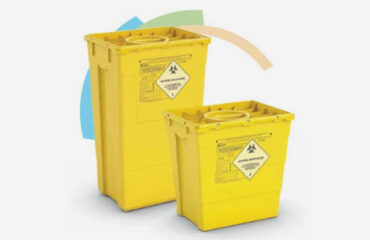Some Known Details About Reclaim Waste
Some Known Details About Reclaim Waste
Blog Article
Facts About Reclaim Waste Uncovered
Table of ContentsFacts About Reclaim Waste Revealed9 Simple Techniques For Reclaim WasteWhat Does Reclaim Waste Do?Excitement About Reclaim WasteNot known Facts About Reclaim Waste
Domestic sewage waste refers to the waste and items from a property septic storage tank. The correct management and disposal of domestic sewer waste need fluid waste to be moved to a sewer therapy plant where the appropriate approaches and tools are applied to detoxify and dispose of waste.
Business waste usually consists of potential hazards, such as combustible materials or a mixture of liquid and strong waste products, and calls for an advanced and comprehensive disposal process. The disposal of commercial waste typically includes the filtering of waste before transport to guarantee safe and proper disposal. Hazardous waste is created from by-products and drainage of commercial procedures and production.
This sort of waste can not utilize the very same sewer monitoring transport or processes as septic or commercial fluids. The hazardous waste management process calls for the inspection and testing of liquid waste before it goes through the disposal procedure (industrial wastewater treatment). Overflow waste is the fluid waste that comes from drainage and excess stormwater in highly booming areas or cities
Runoff waste can create contamination and flooding otherwise managed appropriately. Discover more about sewer cleaning and waste management. Ensuring appropriate waste management can avoid catastrophes and reduce environmental harm. Both people in household settings and professionals in commercial or production markets can profit from understanding the procedures and regulations of fluid waste management.
Reclaim Waste for Beginners
Call PROS Solutions today to find out about our waste administration and disposal solutions and the appropriate methods to look after the liquid waste you create.
(https://reclaimwaste.godaddysites.com/f/efficient-liquid-waste-disposal-removal-melbourne)This so-called 'wastewater' is not only a vital source however, after therapy, will be released to our land, rivers or the ocean. Utilized water from toilets, showers, baths, kitchen area sinks, washings and commercial processes is known as wastewater.

water used to cool machinery or tidy plant and devices). Stormwater, a form of wastewater, is runoff that flows from agricultural and metropolitan locations such as roofing systems, parks, yards, roadways, courses and seamless gutters into stormwater drains pipes, after rainfall. Stormwater moves untreated directly to local creeks or rivers, eventually getting to the ocean.
The 20-Second Trick For Reclaim Waste
In Queensland, a lot of wastewater is treated at sewage therapy plants. Wastewater is transported from domestic or commercial sites with a system of drains and pump terminals, recognized as sewerage reticulation, to a sewer therapy plant. Neighborhood federal governments develop, maintain and operate most sewage therapy plants. Operators are certified under the Environmental Defense Act 1994 to release cured wastewater at an acceptable environmental requirement right into rivers.
The Division of Natural Resources advises city governments regarding managing, operating and maintaining sewage systems and treatment plants. In unsewered areas, city governments might require homeowners to set up private or home sewer treatment systems to treat domestic wastewater from bathrooms, kitchen areas, bathrooms and laundries. The Department of Natural Resources authorises the usage of household systems when they are proven to be efficient.
In some new class, treatment of some stormwater to eliminate litter, sand and crushed rock has actually begun making use of gross toxin catches. Wastewater treatment takes place in four stages: Eliminates solid issue.
Wastewater after that flows into big storage tanks where solids resolve and are gotten rid of as sludge. Grease and scum are skimmed from the surface area. Utilizes have a peek here little living microorganisms called micro-organisms to damage down and eliminate remaining liquified wastes and great particles. Micro-organisms and wastes are integrated in the sludge. Eliminates nitrogen and phosphorus nutrients that can trigger algal flowers in our rivers and intimidate aquatic life.
A Biased View of Reclaim Waste
Nutrient elimination is not offered at all sewer therapy plants due to the fact that it calls for expensive specialised equipment. It is coming to be a lot more usual in Queensland. Clear fluid effluent created after therapy might still contain disease-causing micro-organisms. If this effluent is launched into rivers such as rivers or the sea, the micro-organisms will at some point die out.

This generally means wastewater has to be treated or impurities eliminated prior to it can be discharged to waterways. The majority of wastewater streams right into the sewerage system. Under the Act, city governments carry out approvals and licences for ecologically relevant tasks (Ages) entailing wastewater releases that might have a neighborhood impact. The division carries out authorizations and licences to ERAs involving wastewater launches that may have a regional or statewide impact.
Indicators on Reclaim Waste You Should Know
Surveillance supplies valid details concerning water quality and can validate that permit problems are being fulfilled. The information acquired through surveillance supplies the basis for making water quality decisions.
Report this page